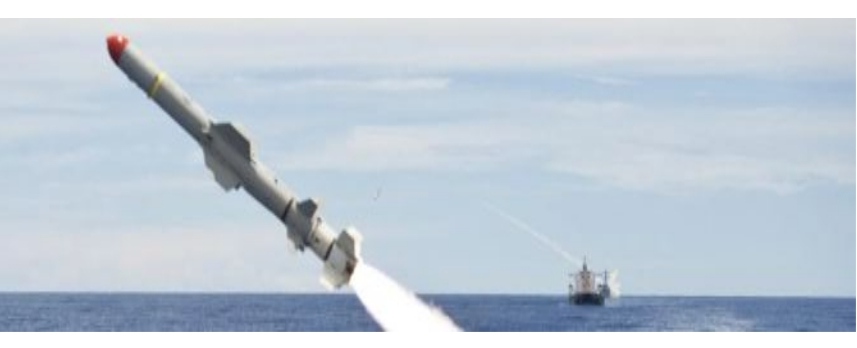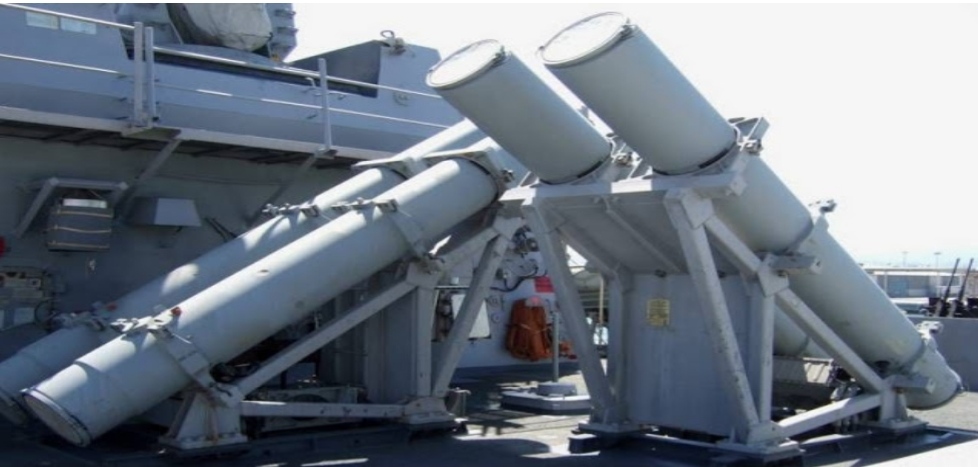American Harpoon Anti Ship Missiles Are No Match To India’s BRAHMOS

One doesn’t know whether to laugh or to cry, when someone sermonizes India to purchase vintage Harpoon missiles from the Americans.
Yes India has made a request for purchase of a Harpoon Joint Common Test Set (JCTS) and related equipment at an estimated cost of $82 million. However it is not for arming Indian Naval Destroyers, Frigates or other ships. India has already armed most of its major combatants with its own BRAHMOS 400 KM anti ship missiles. Over time these will be replaced by 800 km range missiles. Also the first Squadron of BRAHMOS armed SU30 MKI is already operational and IAF intends to have two such squadrons.
Work has also started on next generation of lighter BRAHMOS which can be carried by TEJAS and other fighters.
The US has indeed approved the sale of a decision which it said will help strengthen the bilateral strategic ties. The Pentagon’s Defence Security Cooperation Agency (DSCA) delivered the required certification notifying the US Congress of the possible sale of the Harpoon anti-ship missile.
However to say that that this one set of vintage missile system will improve the security of a major defensive partner in the Indo-Pacific region is just laughable at the least.
The deal also includes one Harpoon Intermediate Level maintenance station; spare and repair parts, support, and test equipment; publications and technical documentation; personnel training; US Government and contractor technical, engineering, and logistics support services; and other related elements of logistics and programme support.
The Harpoon anti-ship missile has a low-level, sea-skimming cruise trajectory with active radar guidance system. India too has such missiles either deployed or soon to be inducted.

The Harpoon was first deployed in 1977. It is an all-weather, over-the-horizon, anti-ship missile system. It has a low-level, sea-skimming cruise trajectory with active radar guidance.
The Harpoon missile is one of the world’s most deployed anti-ship missile and is in service with the armed forces of more than 30 countries, according to Boeing.
The US has produced several variant of the missile to suit air, ship and submarine-launched versions while upgrading it constantly.
Several countries including Australia, Malaysia, Taiwan, Thailand among others have the missile in their arsenal. Pakistan last year had questioned US administrations move to sell Harpoons to India complaining that it would “further destabilise the region”.
Several years ago reports in US media had indicated US officials were unhappy with illegal modifications made to the Harpoon anti-ship missile by Pakistan. US officials had raised the issue with then Pakistan government under former Prime Minister Yousaf Raza Gilani.
The Reagan administration had delivered 165 Harpoon missiles to Pakistan in the 80s as a defensive weapon in the Cold War. The reported modifications by Pakistan violated the US Arms Control Export Act. However Pakistan denied it had made any changes to the anti-ship missile.
The subsonic cruise missile has seen various combat operations since it inception in the 80s. In 1988, Harpoon missiles were used by the US to sink the Iranian frigate Sahand during Operation Praying Mantis. It has an semi-active radar guidance system with a 224 kilo payload. The missile can travel at 0.85 Mach high subsonic speed while hitting targets at a range within 90-240 km range.
Time has certainly come for India to show its presence in the Indo Pacific which will be an important force for political stability, peace, and economic progress of South Asia region.
During the visit of Prime Minister Narendra Modi to the US in June 2016, the US had recognised India as a “major defence partner”, which commits the US to facilitate technology sharing with India to a level commensurate with that of its closest allies and partners, and industry collaboration for defence co-production and co-development.
The proposed foreign military sale, the State Department said, will improve India’s capability to meet current and future threats by providing it with flexible and efficient Harpoon missile maintenance capabilities to ensure maximum force readiness…..just a laughable statement.
“The principal contractor will be The Boeing Company, St. Louis, Missouri. There are no known offset agreements proposed in connection with this potential sale. Any offset agreement required by India will be defined in negotiations between the purchaser and the contractor(s),” it said.
US had earlier sold the anti-ship missiles to Taiwan in a bid to contain China. According to the Centre for Strategic and International Studies, Taiwan already has road-mobile supersonic missile, Hsiung Feng III which has a range of nearly 250 miles.
The two missile systems – Harpoon and Hsiung Feng-III – would act as a deterrent against China military muscle, at least in the short run if hostilities break out between the two countries.
The former Trump administration has ramped up support for Taiwan through arms sales and visits by senior US officials, adding to tensions in relations between Beijing and Washington already strained by disagreements over the South China Sea, Hong Kong, human rights and trade.



